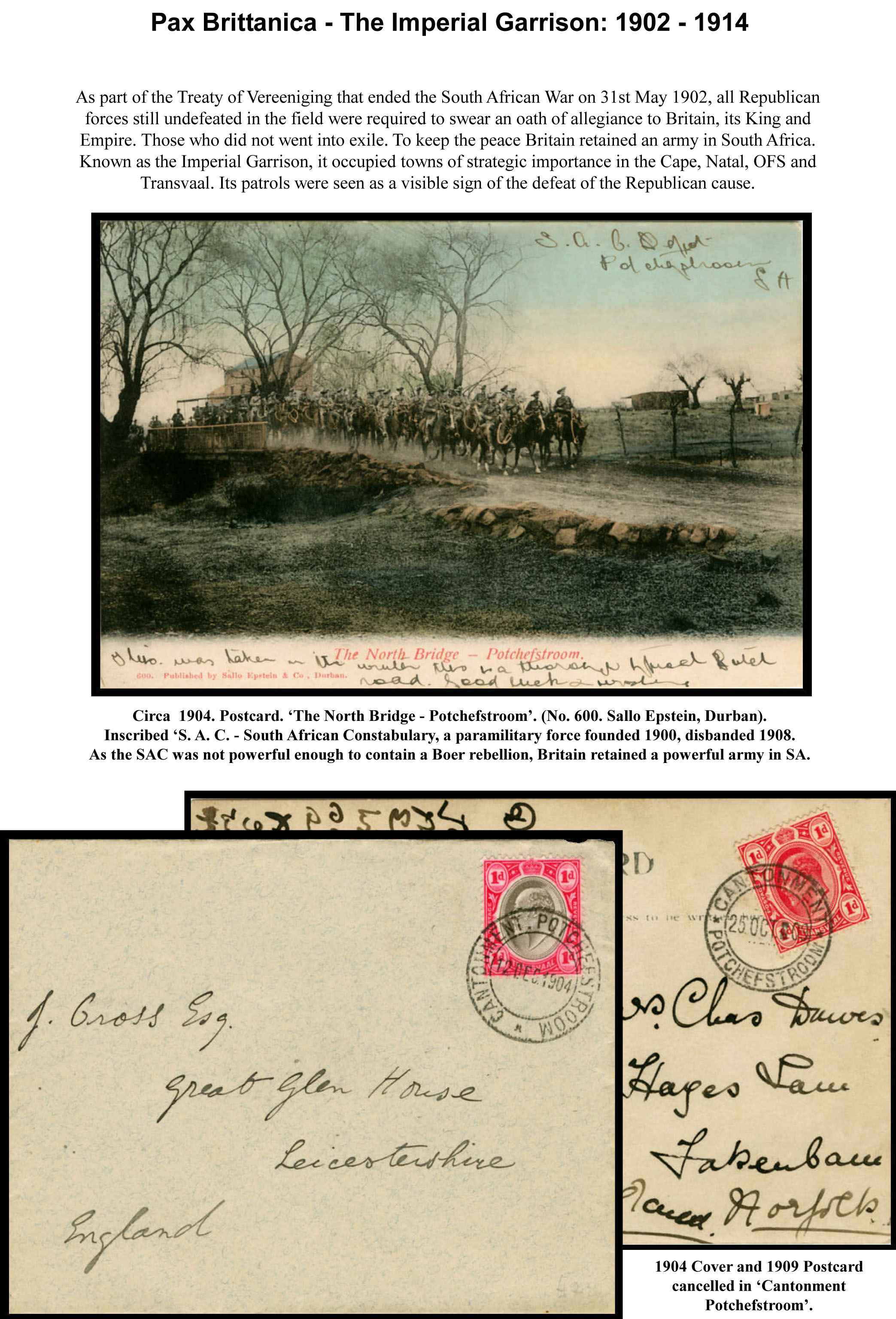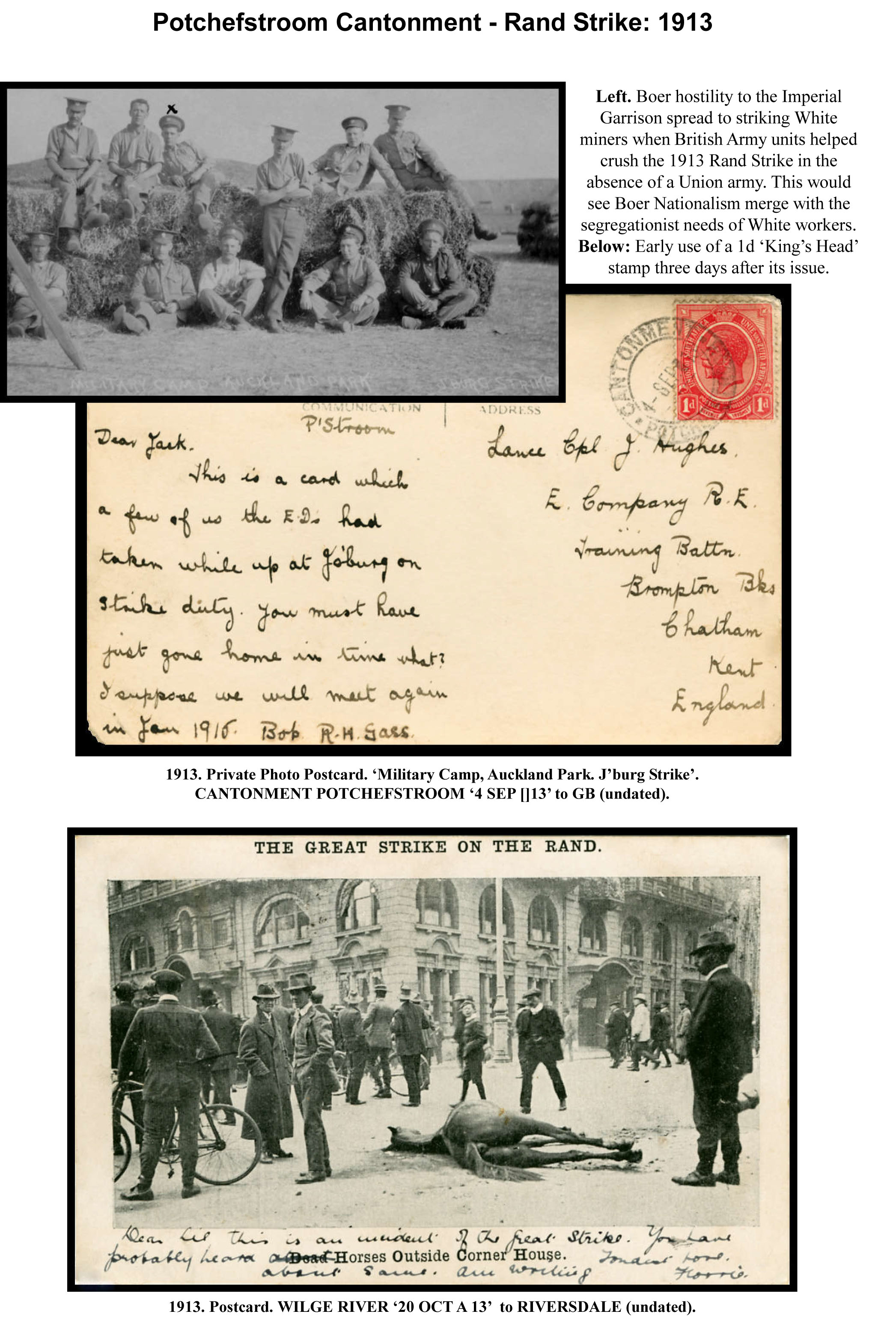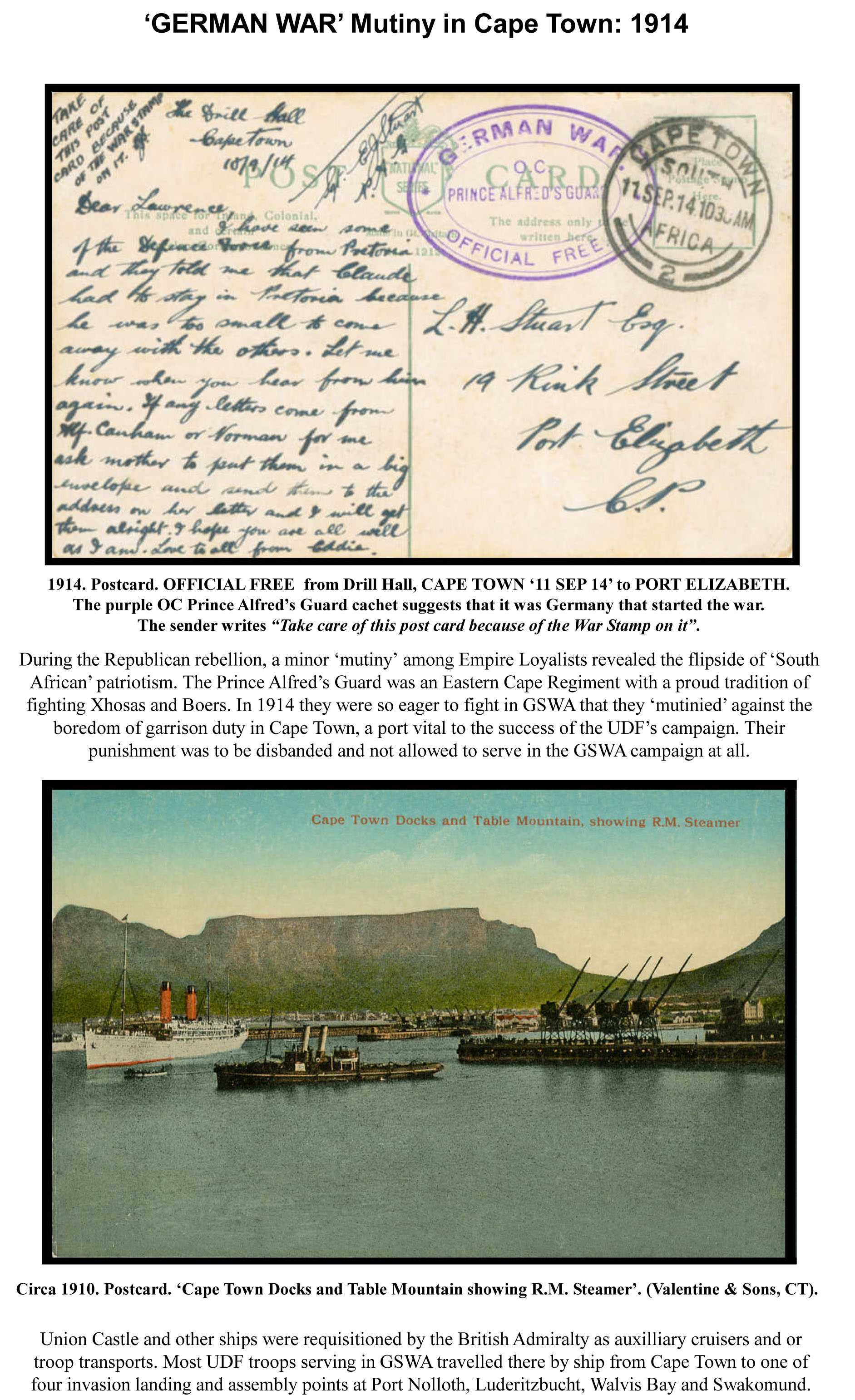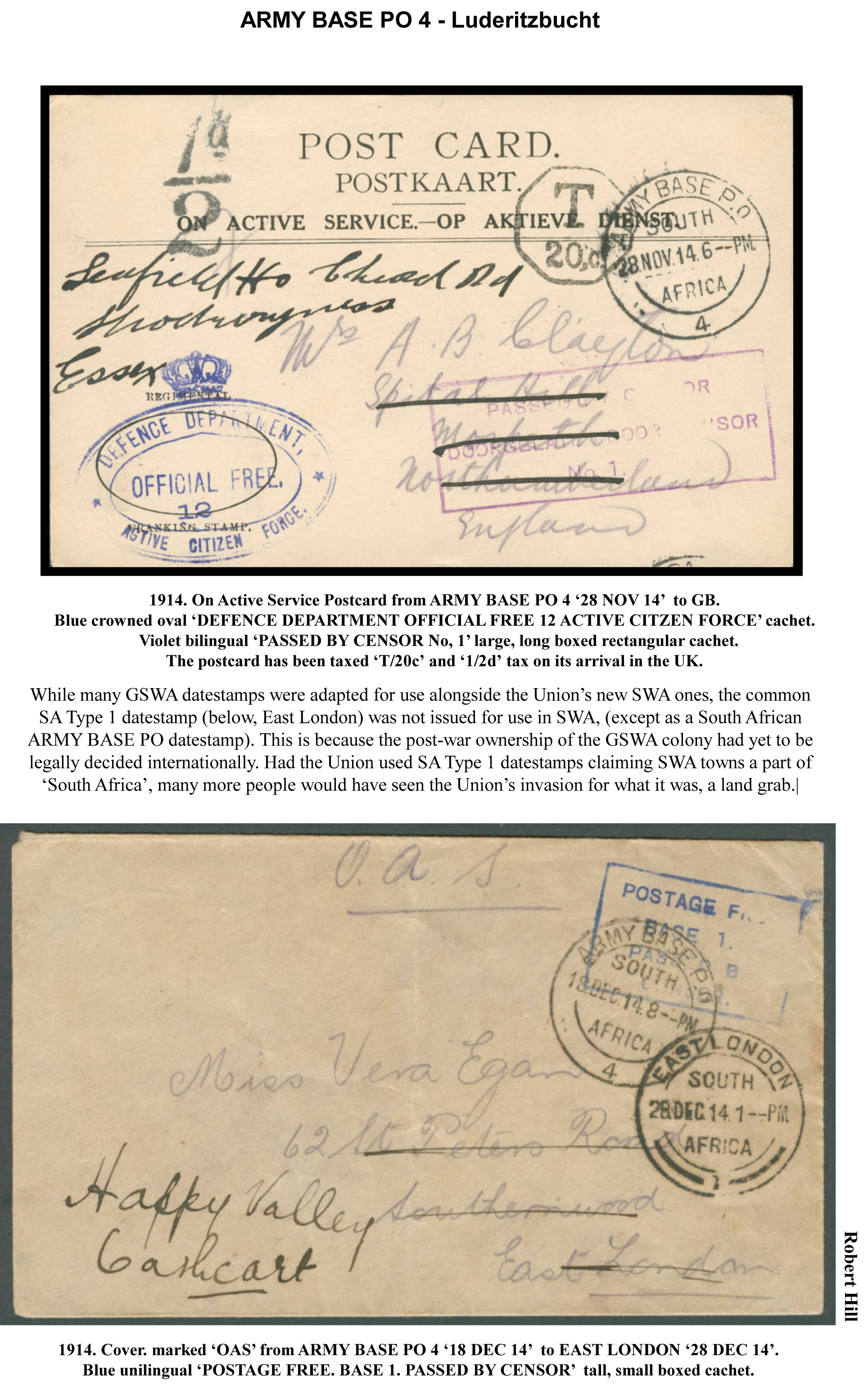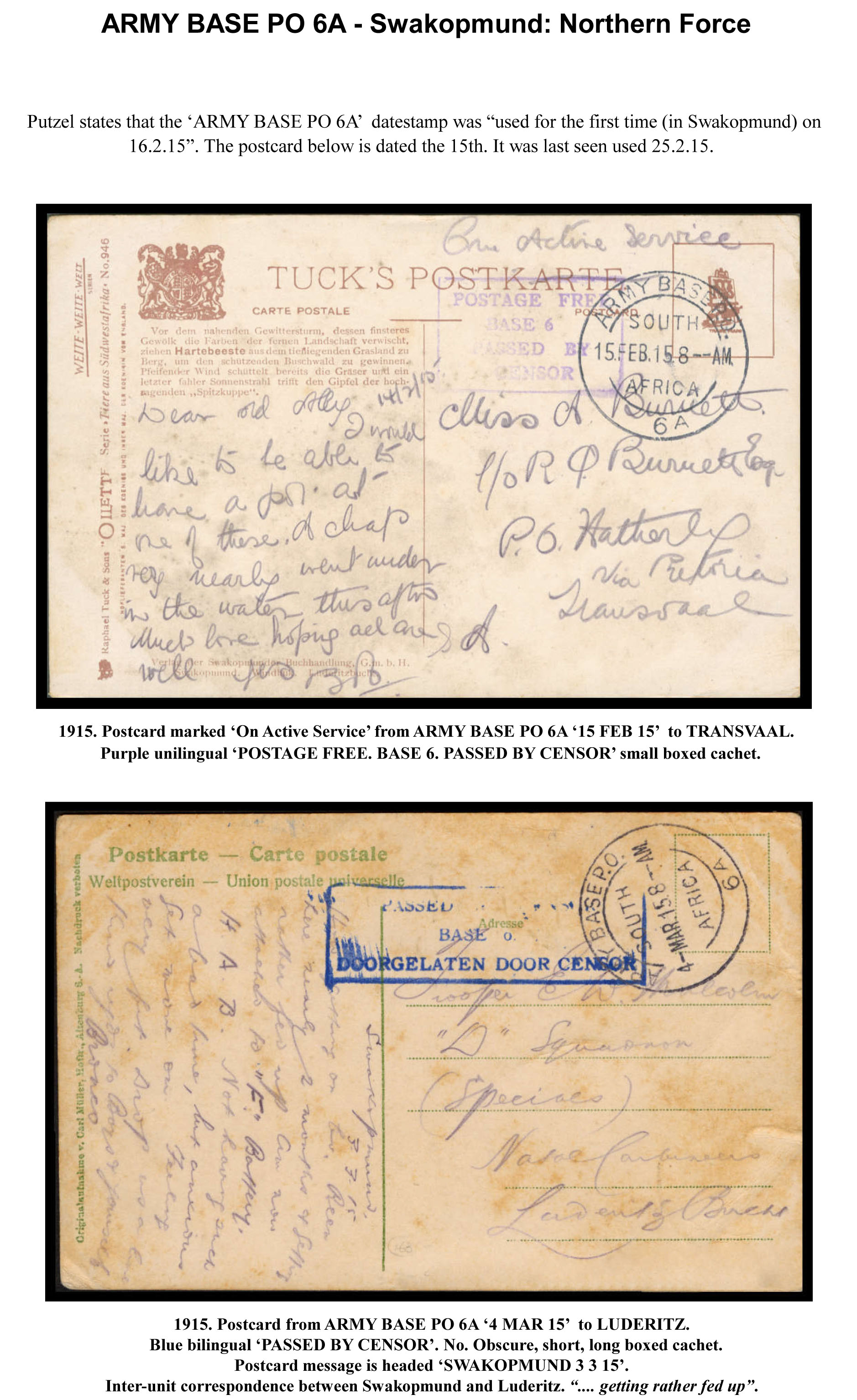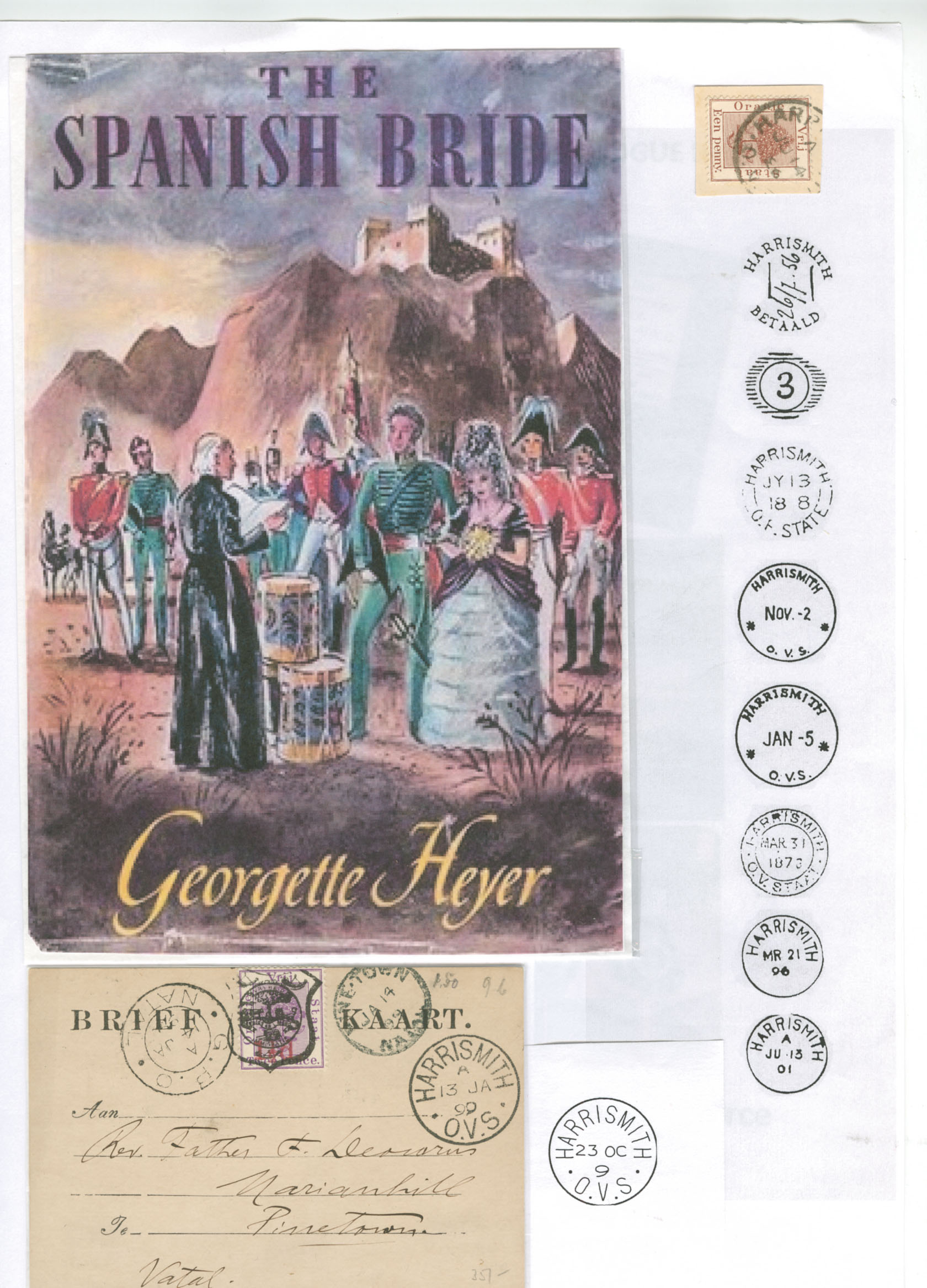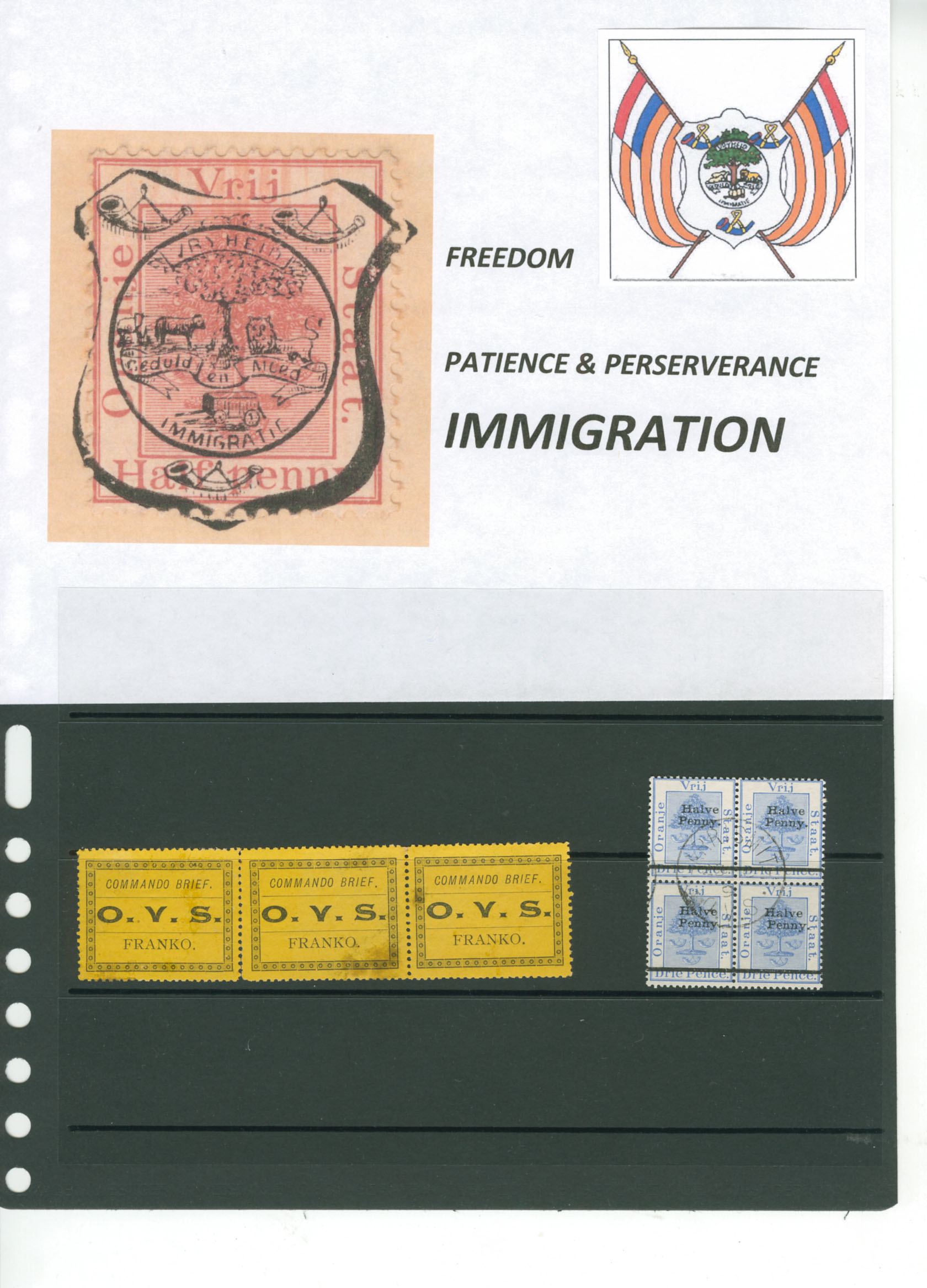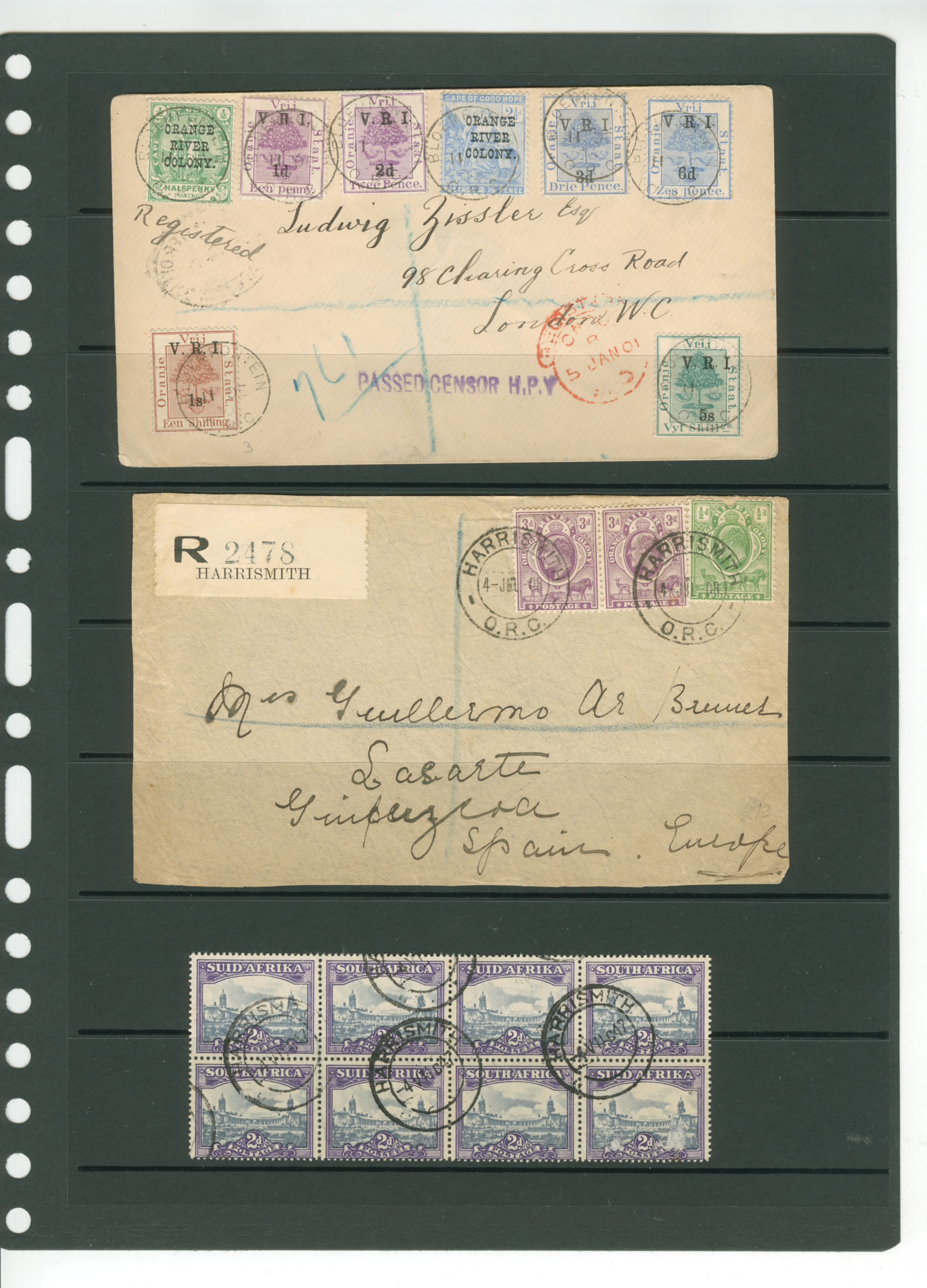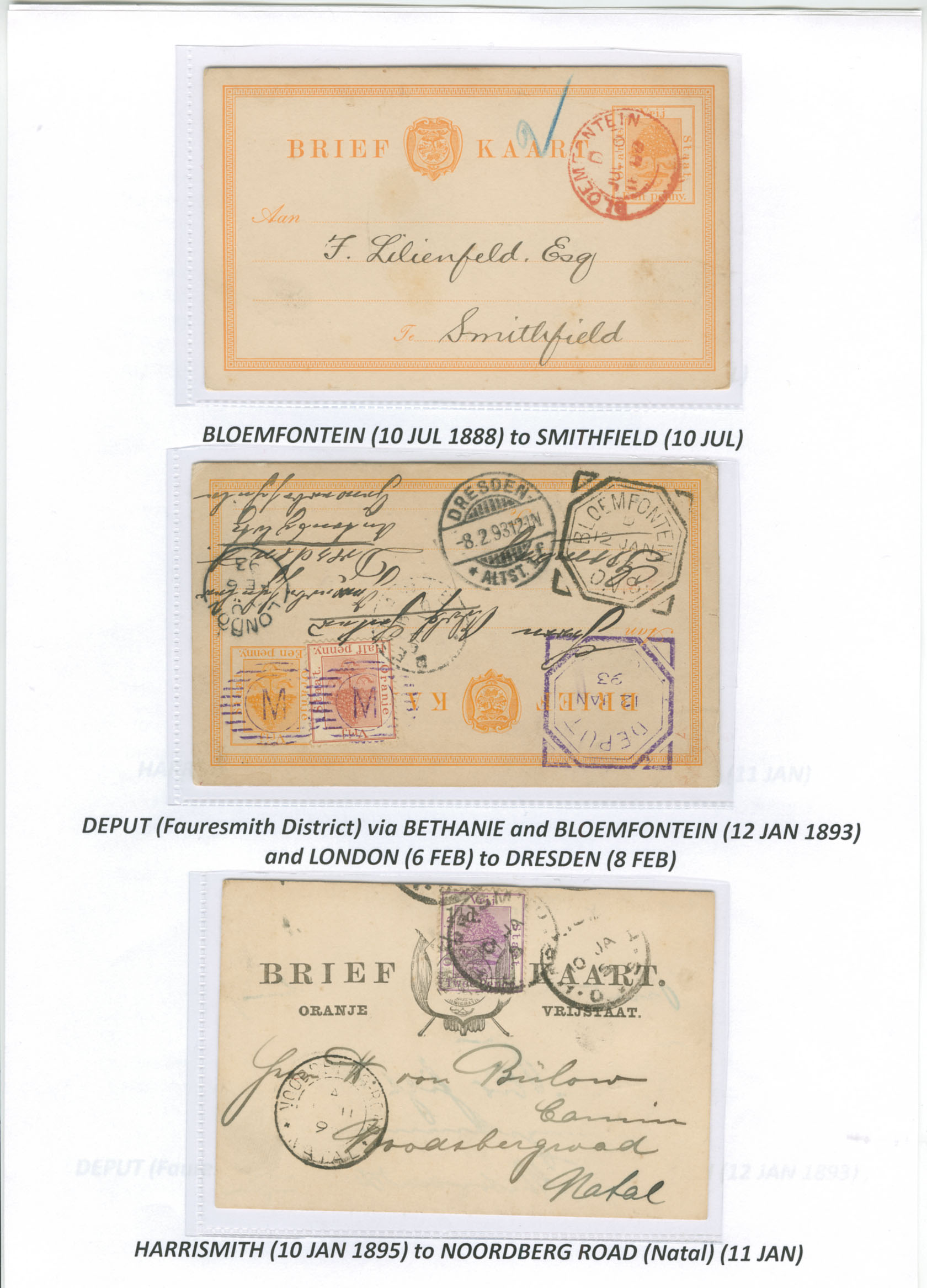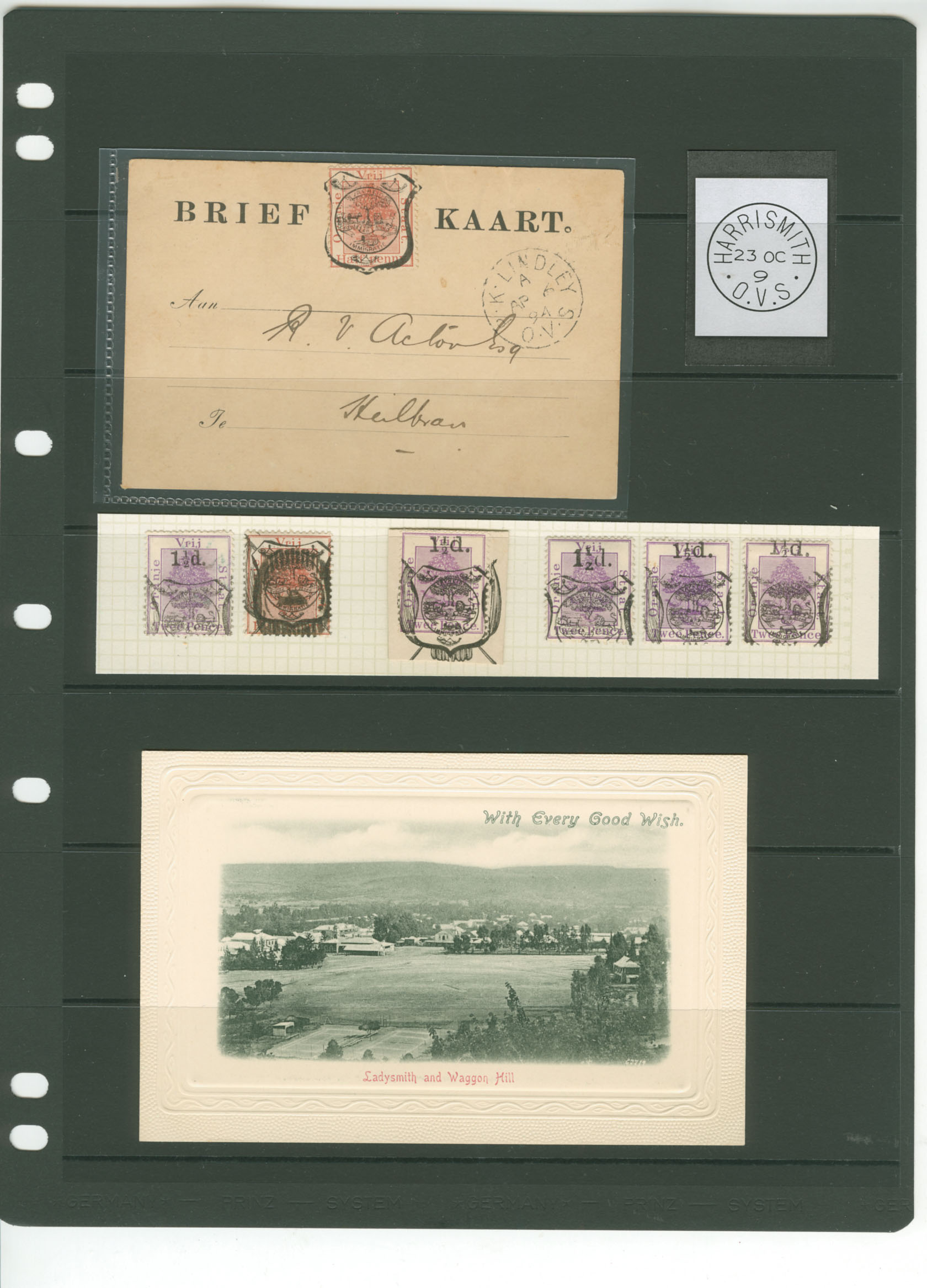How best to organise a display of postmarks?
Quote from yannisl on April 1, 2023, 3:25 amPostmarks of the Cape of Good Hope can present a challenge when creating displays, especially the BONCs and the circular postmarks, which are so numerous. This discussion will focus on the circular postmarks.
In my opinion creating a good representative range of these postmarks requires a combination of pages featuring covers, stamps, and a few with a combination of both.
I am hoping that members who have developed such displays may provide helpful suggestions and inspiration, not necessarily limited to the Cape region especially for pages featuring only stamps.
So far I have sorted the display per type rather than alphabetically and of course anyone collecting a single area or a town, has an easier time, but more difficulties perhaps in sourcing material. As an example take the single circle postmark with a dot at the bottom. There were about 50 places that used these postmarks, whereas the ones with the CGH at the bottom, was used in excess of 250 places.
The circular postmarks were used with every type of obliterators, seen wars, found on taxed covers and witnessed the explosion in postcard and postal stationery usage. So there is a lot of collateral information that can be written besides the postmark type and the town. So far what I have written looks lke a hybrid between a postal history and marcophily and if I ever get there I will say it is best in an open category
Postmarks of the Cape of Good Hope can present a challenge when creating displays, especially the BONCs and the circular postmarks, which are so numerous. This discussion will focus on the circular postmarks.
In my opinion creating a good representative range of these postmarks requires a combination of pages featuring covers, stamps, and a few with a combination of both.
I am hoping that members who have developed such displays may provide helpful suggestions and inspiration, not necessarily limited to the Cape region especially for pages featuring only stamps.
So far I have sorted the display per type rather than alphabetically and of course anyone collecting a single area or a town, has an easier time, but more difficulties perhaps in sourcing material. As an example take the single circle postmark with a dot at the bottom. There were about 50 places that used these postmarks, whereas the ones with the CGH at the bottom, was used in excess of 250 places.
The circular postmarks were used with every type of obliterators, seen wars, found on taxed covers and witnessed the explosion in postcard and postal stationery usage. So there is a lot of collateral information that can be written besides the postmark type and the town. So far what I have written looks lke a hybrid between a postal history and marcophily and if I ever get there I will say it is best in an open category
Uploaded files:Quote from Steve on April 1, 2023, 1:00 pmThe topic here is "How best to organise a display of postmarks?" The preceding display pages do this very well. They are attractive, neat, well-balanced and make efficient use of white-space to serve the purpose of documentation. This is typically what most collectors would aspire to achieve and few do it as well as this.
As an overview, when laying out a display, you need to decide if your aim is to display it competitively or not.
If you want to enter your display into a club or society competition, you will need be a member of a philatelic society. You will need to get hold of their rules for mounting a display so that it meets the over-arching federation requirements. If you do not follow their rules, you will be marked down. If you do not want to enter your display into a club competion, you are free to do it how ever you want. The South African Philately Club is willing to provide Philatelic & Postal History outsiders with a display platform.
The rules can be a real pain, which is why I never enter my material competitively. For instance, I collect Postal History. Under the rules, this class is restrcted to the study "of the development of postal services, including the evolution of rates and routes, postal markings and marcophily. It is not normally advisable to include unused adhesives or unused postal stationery. .... The non-philatelic material should be incorporated into the exhibit in a balanced and appropriate manner that does not overwhelm the philatelic material. Non-philatelic items must relate directly to the Postal History material."
Philatelic Judges can introduce a host of potential personal prejudices in that description of what the ABPS (The Association of British Philatelic Societies) expect. Its 'not normally advisable', (what's normal?); 'balanced and appropriate', (ditto!); 'does not overwhelm' (personal aesthetics); and 'relate directly' (prescriptive!). In my experience one judge will fault the display pages for it being on white paper (that's not me being woke!) while another may say that a display on grey or off-white paper would be improved by something else. Others think all covers, postcards, etc, should be mounted on a black background. All this is restrictive and subject to the whim of some judge's aesthetic sensibilities. Even a display heading that is slightly misdated and misleading will lose you pints
I like to mix things up - mint stamps, postcards on piece, covers, postcards, cigarette cards, ephemera and photos. Because I am a historian who posts material on-line I usually have more text than the powers-that-be approve of. This is because if I am not standing in front of a society audience talking away, people viewing it on-line need to read the back-story. However, one thing judges will agree on is too much text. (I agree that a basinful of text is unsightly). So, a growing number of postal historians are now gravitating to more free-form Open Class displays, something that developed outside of organised philately as a result of collectors wanting to express themselves more creatively. However, even here the dead hand of the Philatelic Cosa Nostra now want to enforce their rules.
Before I go off-piste, again, if you are are writing up the 'History of the Zulu War, 1879' ie. a history and you want to pack it with covers, photos and ephemera, you should probably go Open Class and include a map of Zululand. (Failure to do so will lose you points.) However, if you are simply going to display postmarks on piece, postcard or cover as a reference for Natal, Cape ZAR and TVL postmarks, then a more sober traditional approach is warranted. However you display your postmark collection you should do it in the way that is most satisfying to you even if you are entering it in a society competition. It's your work.
Below are some pages I took rather randomly from an 'Invasion of GSWA WW1 1914 - 1915' display. I omitted some of the more busy Open Class Display pages in order to concentrate more on postmarks. I realise now that I could have made this display more about the postmarks shown. Normally I print to ivory paper but because I have done this digitally from PDF to JPG, the background has disappeared and appeared transparent and, very annoyingly given that this is about A4 displays, the sheet has been cropped.
The topic here is "How best to organise a display of postmarks?" The preceding display pages do this very well. They are attractive, neat, well-balanced and make efficient use of white-space to serve the purpose of documentation. This is typically what most collectors would aspire to achieve and few do it as well as this.
As an overview, when laying out a display, you need to decide if your aim is to display it competitively or not.
If you want to enter your display into a club or society competition, you will need be a member of a philatelic society. You will need to get hold of their rules for mounting a display so that it meets the over-arching federation requirements. If you do not follow their rules, you will be marked down. If you do not want to enter your display into a club competion, you are free to do it how ever you want. The South African Philately Club is willing to provide Philatelic & Postal History outsiders with a display platform.
The rules can be a real pain, which is why I never enter my material competitively. For instance, I collect Postal History. Under the rules, this class is restrcted to the study "of the development of postal services, including the evolution of rates and routes, postal markings and marcophily. It is not normally advisable to include unused adhesives or unused postal stationery. .... The non-philatelic material should be incorporated into the exhibit in a balanced and appropriate manner that does not overwhelm the philatelic material. Non-philatelic items must relate directly to the Postal History material."
Philatelic Judges can introduce a host of potential personal prejudices in that description of what the ABPS (The Association of British Philatelic Societies) expect. Its 'not normally advisable', (what's normal?); 'balanced and appropriate', (ditto!); 'does not overwhelm' (personal aesthetics); and 'relate directly' (prescriptive!). In my experience one judge will fault the display pages for it being on white paper (that's not me being woke!) while another may say that a display on grey or off-white paper would be improved by something else. Others think all covers, postcards, etc, should be mounted on a black background. All this is restrictive and subject to the whim of some judge's aesthetic sensibilities. Even a display heading that is slightly misdated and misleading will lose you pints
I like to mix things up - mint stamps, postcards on piece, covers, postcards, cigarette cards, ephemera and photos. Because I am a historian who posts material on-line I usually have more text than the powers-that-be approve of. This is because if I am not standing in front of a society audience talking away, people viewing it on-line need to read the back-story. However, one thing judges will agree on is too much text. (I agree that a basinful of text is unsightly). So, a growing number of postal historians are now gravitating to more free-form Open Class displays, something that developed outside of organised philately as a result of collectors wanting to express themselves more creatively. However, even here the dead hand of the Philatelic Cosa Nostra now want to enforce their rules.
Before I go off-piste, again, if you are are writing up the 'History of the Zulu War, 1879' ie. a history and you want to pack it with covers, photos and ephemera, you should probably go Open Class and include a map of Zululand. (Failure to do so will lose you points.) However, if you are simply going to display postmarks on piece, postcard or cover as a reference for Natal, Cape ZAR and TVL postmarks, then a more sober traditional approach is warranted. However you display your postmark collection you should do it in the way that is most satisfying to you even if you are entering it in a society competition. It's your work.
Below are some pages I took rather randomly from an 'Invasion of GSWA WW1 1914 - 1915' display. I omitted some of the more busy Open Class Display pages in order to concentrate more on postmarks. I realise now that I could have made this display more about the postmarks shown. Normally I print to ivory paper but because I have done this digitally from PDF to JPG, the background has disappeared and appeared transparent and, very annoyingly given that this is about A4 displays, the sheet has been cropped.
Uploaded files:Quote from yannisl on April 2, 2023, 7:13 amThanks Steve, for your thoughts, suggestions and sharing pages from your own collection. You say: As an overview, when laying out a display, you need to decide if your aim is to display it competitively or not To be honest I am sitting on the fence. I want to share some of my collection with other philatelists and postal historians and attend some society meetings etc now that I am not bound with work, but I am not really the type of person that enters competitions. I am aware of the rules, which as you pointed out, take some of the pleasure of collecting away. Most of the exhibit on circular postmarks of the Cape of Good Hope, complies easily with the rules, I would say about 5% doesn't For example in discussing the circular postmark (blank at bottom) I have a cover addressed to Island of Man from Imvani (see image), I added some details for the addressee. Also I wanted to include some pages with postmarks on stamps (I show an example with BONCs), but I will replace all these with circular types. The reason for the latter was to try and get nearer to completion of some of the circular types. I have about 250 pages with covers or postcards. Using stamps one can compress more into a page. Like all known BONCs for example, can be compressed in 2 frames.
By the way, I hear you about page colours. I prefer white (or offwhite) for the main reason, it is easier for my workflow to go to a pdf. I used a background colour for the pages on BONCs below. I accept that this can sometimes look better. I bought some stuff last year that were mounted on a grey page, and can see what a pain is to mount the cover (it needs two backings, one for the cover and another to make the white frame.
By the way the images of the BONCs are not my own, just downloaded a few to illustrate my point.
Anyway Steve, I will see how the year goes, if I finish some of the displays, I might take the plunge and exhibit, bending the rules a little bit where I disagree, if nothing else as an excuse to come to the UK and also have a beer with you guys. Losing some points in a competition is not that important.
Thanks Steve, for your thoughts, suggestions and sharing pages from your own collection. You say: As an overview, when laying out a display, you need to decide if your aim is to display it competitively or not To be honest I am sitting on the fence. I want to share some of my collection with other philatelists and postal historians and attend some society meetings etc now that I am not bound with work, but I am not really the type of person that enters competitions. I am aware of the rules, which as you pointed out, take some of the pleasure of collecting away. Most of the exhibit on circular postmarks of the Cape of Good Hope, complies easily with the rules, I would say about 5% doesn't For example in discussing the circular postmark (blank at bottom) I have a cover addressed to Island of Man from Imvani (see image), I added some details for the addressee. Also I wanted to include some pages with postmarks on stamps (I show an example with BONCs), but I will replace all these with circular types. The reason for the latter was to try and get nearer to completion of some of the circular types. I have about 250 pages with covers or postcards. Using stamps one can compress more into a page. Like all known BONCs for example, can be compressed in 2 frames.
By the way, I hear you about page colours. I prefer white (or offwhite) for the main reason, it is easier for my workflow to go to a pdf. I used a background colour for the pages on BONCs below. I accept that this can sometimes look better. I bought some stuff last year that were mounted on a grey page, and can see what a pain is to mount the cover (it needs two backings, one for the cover and another to make the white frame.
By the way the images of the BONCs are not my own, just downloaded a few to illustrate my point.
Anyway Steve, I will see how the year goes, if I finish some of the displays, I might take the plunge and exhibit, bending the rules a little bit where I disagree, if nothing else as an excuse to come to the UK and also have a beer with you guys. Losing some points in a competition is not that important.
Uploaded files:
Quote from Steve on April 2, 2023, 1:20 pmIf you are to come to the UK and you want to display something then it would be a good idea to join SACS (South African Collector's Society) (£18 per year with printed magazine and £10 for PDF) and attend the South Africa Philatelic Societys' conference on the weekend of November 5th and 6th in the Strawberry Bank Hotel in Meriden, assuming it is going to be held. Sadly, like most philatelic societies it is finding it difficult with falling membership to arrange. This meeting is an umbrella one for all the various societies that collect southern African material.
The Saturday is given over to pre-arranged speakers but Sunday allows all and sundry to stand up and show their material. Most presentations on Sunday are no more than 20 minutes long. If I cannot arrange for you to speak on the Saturday for an hour, the alternative is to come to Letchworth which is a pure regional SACS meeting, meet some of the guys and gals, (we have two of them) show us what you want, talk for almost as long as you want and pave the way for Meriden. Neither of these meetings are competitive so you can show your material just how you want it. However, the Meriden meeting does include a typical club 9 page competition which is judged anonymously by the members. I should have won it last year but didn't, the audience comprising a majority of stamp collectors! :>)
If you are to come to the UK and you want to display something then it would be a good idea to join SACS (South African Collector's Society) (£18 per year with printed magazine and £10 for PDF) and attend the South Africa Philatelic Societys' conference on the weekend of November 5th and 6th in the Strawberry Bank Hotel in Meriden, assuming it is going to be held. Sadly, like most philatelic societies it is finding it difficult with falling membership to arrange. This meeting is an umbrella one for all the various societies that collect southern African material.
The Saturday is given over to pre-arranged speakers but Sunday allows all and sundry to stand up and show their material. Most presentations on Sunday are no more than 20 minutes long. If I cannot arrange for you to speak on the Saturday for an hour, the alternative is to come to Letchworth which is a pure regional SACS meeting, meet some of the guys and gals, (we have two of them) show us what you want, talk for almost as long as you want and pave the way for Meriden. Neither of these meetings are competitive so you can show your material just how you want it. However, the Meriden meeting does include a typical club 9 page competition which is judged anonymously by the members. I should have won it last year but didn't, the audience comprising a majority of stamp collectors! :>)
Quote from yannisl on April 2, 2023, 1:47 pmThanks Steve sounds like a good idea. Will be in Cyprus from June for about a year, and is a short trip to the UK from there. I will join the SACS in the meantime.
Thanks Steve sounds like a good idea. Will be in Cyprus from June for about a year, and is a short trip to the UK from there. I will join the SACS in the meantime.
Quote from Steve on April 3, 2023, 12:39 pmHow Not to Display
Below are a few sample 'pages' taken from my very first display which I gave to the Cambridge Philatelic Society. It was a "Show What You Like' evening. I felt I had to show something because society's exist because of the energy and activities of their members and that I had kept my postcards close too my chest for too long.
Feeling that I had to do something was probably my first mistake. I should have waited and put more thought and planning into my display which, as you can see, was quite clearly thrown together. The response was rather like the young South African who in the 1980s hung his underclothes out to dry in a balcony on Nevern Square, London, only to be scolded by the faded Lady next door for lowering the tone of the neighbourhood.
Here's a brief criticism of what is wrong:
1]. No heading, no captions. There is no indication as to what the display is about. (It was about Harrismith in the Boer OFS and Ladysmith in British Natal. ) The dustcover of 'The Spanish Bride' shows the marriage of Sir Harry Smith to his child bride, Spanish aristocratic wife, Juana María de los Dolores de León Smith, after the siege of Badajoz in the Peninsula War. At the time she was without protection in the midst of raping and pillaging British troops. Harrismith in the OFS is named after Harry Smith while Ladysmith, just over the Drakensberg in Natal is named after his wife. The cover should have been reduced, given a caption or not used at all. Their tempestuous relationship is reflected in the fact that during the SAW the Harrismith commando participated in the encirclement and siege of Ladsmith. It seem that Harry and Juana's fiery relationship continued long after their deaths.
2]. You can't just enlarge stamps and or place them in stockcards. What do the captions refer to?
3]. Nice covers but you cannot mount them like that. It's tacky! Where are the captions?
4]. Okay, some captions but mounting the postcards in plastic sleeves is just a short-cut, not an attractive solution.
5]. All the previous criticisms are repeated here.In my defence this was my first 'display', that it was rushed and that I did not have the necessary materials to hand to do it differently. I also spoke in front of the audience and described much of it in the belief I could dispense with captions and text.
On a scale of 1 -10: 0
How Not to Display
Below are a few sample 'pages' taken from my very first display which I gave to the Cambridge Philatelic Society. It was a "Show What You Like' evening. I felt I had to show something because society's exist because of the energy and activities of their members and that I had kept my postcards close too my chest for too long.
Feeling that I had to do something was probably my first mistake. I should have waited and put more thought and planning into my display which, as you can see, was quite clearly thrown together. The response was rather like the young South African who in the 1980s hung his underclothes out to dry in a balcony on Nevern Square, London, only to be scolded by the faded Lady next door for lowering the tone of the neighbourhood.
Here's a brief criticism of what is wrong:
1]. No heading, no captions. There is no indication as to what the display is about. (It was about Harrismith in the Boer OFS and Ladysmith in British Natal. ) The dustcover of 'The Spanish Bride' shows the marriage of Sir Harry Smith to his child bride, Spanish aristocratic wife, Juana María de los Dolores de León Smith, after the siege of Badajoz in the Peninsula War. At the time she was without protection in the midst of raping and pillaging British troops. Harrismith in the OFS is named after Harry Smith while Ladysmith, just over the Drakensberg in Natal is named after his wife. The cover should have been reduced, given a caption or not used at all. Their tempestuous relationship is reflected in the fact that during the SAW the Harrismith commando participated in the encirclement and siege of Ladsmith. It seem that Harry and Juana's fiery relationship continued long after their deaths.
2]. You can't just enlarge stamps and or place them in stockcards. What do the captions refer to?
3]. Nice covers but you cannot mount them like that. It's tacky! Where are the captions?
4]. Okay, some captions but mounting the postcards in plastic sleeves is just a short-cut, not an attractive solution.
5]. All the previous criticisms are repeated here.
In my defence this was my first 'display', that it was rushed and that I did not have the necessary materials to hand to do it differently. I also spoke in front of the audience and described much of it in the belief I could dispense with captions and text.
On a scale of 1 -10: 0
Uploaded files:Quote from yannisl on April 3, 2023, 3:49 pmInteresting items Steve and I think a good topic, but it did miss the write-up. I didnt know the story with his wife and her Spanish origins. Smith had one more towns named after his name Smithfield in the OFS. Also Aliwal North which he established he named the town "Aliwal North" in memory of his victory over the Sikhs at the Battle of Aliwal during the First Sikh War in India in 1846. Strange enough, I had a cover addressed to him and did the write-up fairly recently, It needs a bit of editing though. I have been to all these places many times, especially Harrismith which was a stop over to Durban and had one of the best breakfasts. Was a gas station with a wimpy! Aliwal North is especially beautiful or was.
One aspect which I think distracts froma lot of specialized displays relating to places, is the combination of older material with material after the Union, sort of does not blend well. I really enjoyed the Worcester Display you published lately and went through it a few times, I understand the need for more modern material, which was plentiful at the end, but sort of knocks the history part out for me.
Interesting items Steve and I think a good topic, but it did miss the write-up. I didnt know the story with his wife and her Spanish origins. Smith had one more towns named after his name Smithfield in the OFS. Also Aliwal North which he established he named the town "Aliwal North" in memory of his victory over the Sikhs at the Battle of Aliwal during the First Sikh War in India in 1846. Strange enough, I had a cover addressed to him and did the write-up fairly recently, It needs a bit of editing though. I have been to all these places many times, especially Harrismith which was a stop over to Durban and had one of the best breakfasts. Was a gas station with a wimpy! Aliwal North is especially beautiful or was.
One aspect which I think distracts froma lot of specialized displays relating to places, is the combination of older material with material after the Union, sort of does not blend well. I really enjoyed the Worcester Display you published lately and went through it a few times, I understand the need for more modern material, which was plentiful at the end, but sort of knocks the history part out for me.
Uploaded files:Quote from Steve on April 3, 2023, 5:17 pmAnother town partly named after Harry Smith is Fauresmith, one of the most important towns in the Orange Free State. The name is a combination of Faure, the moderator of the NG church who played a part in the founding of the town and Sir Harry Smith, the Governor of the Cape. The town of New Smithfield in the OFS, which you mention, was also named after Sir Harry Smith, former governor of the Cape Colony. The 'New' was soon dropped.
Harry and Juana had an 'interesting' life. She was his constant companion, forever fighting with him and he loving it, apparently. They were tempestuous lovers. "The only thing they did well was make love and make war with each other!" I posted a photo of Harrismith recently and someone wrote in how neglected and dirty it was.
I take your point about mixing period pieces up to the detriment of history (the older material) with modern, (Union, tolerable, and the Republic era awful). I agree it should be avoided but sometimes it cannot, like when you are doing the history of a town or a technology like the telegraph. I am not a fan of the stamps of the recent South African history that I lived through. That may suggest that I think that early South African history was a wonderful Boy's Own adventure. It wasn't. For me history is about knowing who I am and how I got to this place, a South African living in grim, grey, woke Cambridge rather than the wonderful, multi-cultural vibrant land of my birth.
With regards to Gawie's display, it was about the postal history of Worcester, from a farm in the veld to the modern town today. That needs both early and modern material, just like my small displays on towns I loved as a boy, Ceres, Hermanus, and bigger ones like Simonstown from 1742 when it was first used as an anchorage to 1975 when Britain left Simonstown, the first town it had conquered in SA. I don't really know what more there is to the tale of Simonstown other than First Day Naval covers and declining and unreliable postal services! BTW, I will pull my finger out and try to put up the second part of his Worcester tale. It has good stuff in it. But right now I am attempting to put together a display on the Postmistresses of the CoGH in time for this coming weekend's SACS meeting.
Another town partly named after Harry Smith is Fauresmith, one of the most important towns in the Orange Free State. The name is a combination of Faure, the moderator of the NG church who played a part in the founding of the town and Sir Harry Smith, the Governor of the Cape. The town of New Smithfield in the OFS, which you mention, was also named after Sir Harry Smith, former governor of the Cape Colony. The 'New' was soon dropped.
Harry and Juana had an 'interesting' life. She was his constant companion, forever fighting with him and he loving it, apparently. They were tempestuous lovers. "The only thing they did well was make love and make war with each other!" I posted a photo of Harrismith recently and someone wrote in how neglected and dirty it was.
I take your point about mixing period pieces up to the detriment of history (the older material) with modern, (Union, tolerable, and the Republic era awful). I agree it should be avoided but sometimes it cannot, like when you are doing the history of a town or a technology like the telegraph. I am not a fan of the stamps of the recent South African history that I lived through. That may suggest that I think that early South African history was a wonderful Boy's Own adventure. It wasn't. For me history is about knowing who I am and how I got to this place, a South African living in grim, grey, woke Cambridge rather than the wonderful, multi-cultural vibrant land of my birth.
With regards to Gawie's display, it was about the postal history of Worcester, from a farm in the veld to the modern town today. That needs both early and modern material, just like my small displays on towns I loved as a boy, Ceres, Hermanus, and bigger ones like Simonstown from 1742 when it was first used as an anchorage to 1975 when Britain left Simonstown, the first town it had conquered in SA. I don't really know what more there is to the tale of Simonstown other than First Day Naval covers and declining and unreliable postal services! BTW, I will pull my finger out and try to put up the second part of his Worcester tale. It has good stuff in it. But right now I am attempting to put together a display on the Postmistresses of the CoGH in time for this coming weekend's SACS meeting.


